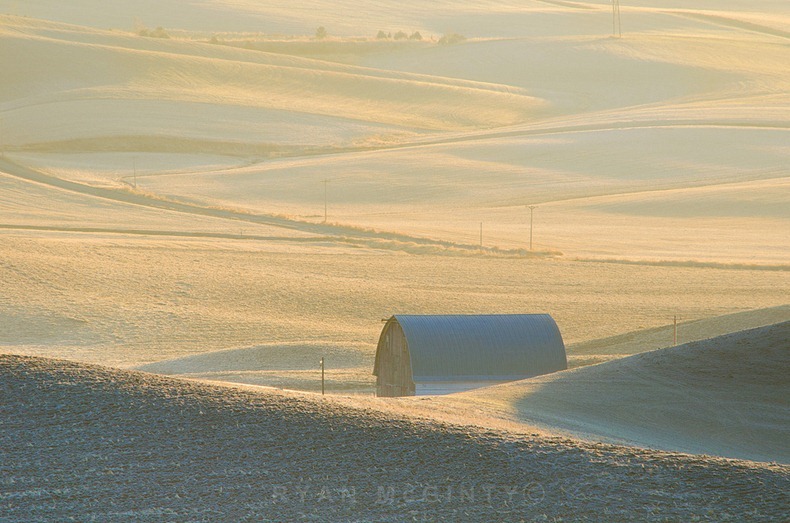The Palouse is a region of the northwestern United States, encompassing parts of southeastern Washington, north central Idaho and, in some definitions, extending south into northeast Oregon. Located just south of Spokane, the Palouse is a rich farming area of some 3,000 square miles primarily producing wheat and legumes. This area is characterized by beautiful rolling hills, lush green dunes and rich deep soil. For photographers, the Palouse is an exciting area to explore, in large measure because it is comparatively unknown.
The peculiar and picturesque silt dunes of the Palouse Prairie were formed thousands of years ago during the ice ages. Blown in from the glacial outwash plains to the west and south, the Palouse hills consist of more or less random humps and hollows. The steepest slopes may reach 50% slope while the lowest low ranges from 5 to 130 cm deep. Large areas of level land are rare.
The vast expanses of the rolling Palouse hills were once covered with native grassland before European settlers moved into the area and began intensive farming. Unlike some other North American grasslands, such as the short grass prairies of the Great Plains and tall grass prairies of the Midwest, neither fires nor extensive grazing by large herbivores were historically a part of the Palouse grassland ecology. When European settlers moved into the Palouse at the end of the nineteenth century, they brought both fire and grazers. These two influences had a huge impact on the native plants.















Tiada ulasan:
Catat Ulasan